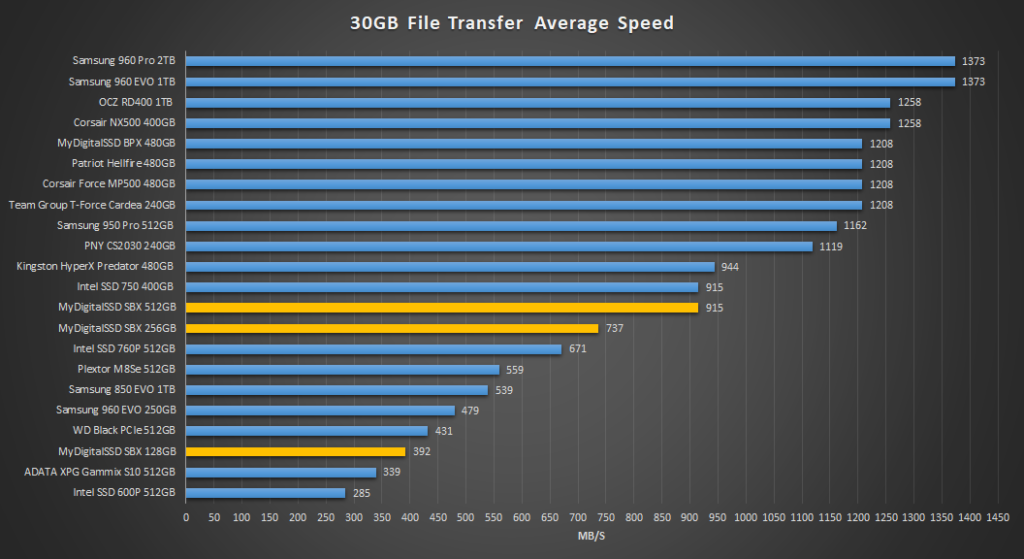REAL WORLD FILE TRANSFER
We also wanted to see how performance was in a real-world use when transferring large files to the SSD. For this test, we are going to simply stress write performance by transferring over a 30GB folder of movies off of a 512GB Samsung 950 Pro to the test SSDs and time how long it takes. Once complete we can calculate the average speed.
Overall, the SBX series performed well during the 30GB transfer. All seemed to have averaged a little slower than their rated write speed, so we can see that there seems to be an SLC write cache filling during the test. HDTune should tell us more about this once we finish our power tests.
POWER CONSUMPTION
For our power consumption testing, we have the drive connected to the system as a secondary drive. To record the wattage, we are now utilizing a Quarch Technology Programmable Power Module. It allows us to accurately measure power consumption over time and is flexible enough to allow us to test any SSD that comes our way.
Our power analysis may change as time goes on, but for now, we are looking at just a few metrics with the main goal of measuring our results against the manufacturer’s ratings. Because most consumer systems are at idle for about 80% of the time, idle power consumption is an important measure to look at when understanding the efficiency of a drive.
First up we have our results with Active State Power Management disabled. Here the MyDigitalSSD SBX dominated. Idle power consumption is half that of other PCIe devices.
In the chart above, with ASPM enabled, we can see that the SBX starts to blend in with the crowd. While it consumed half the power when ASPM was disabled, now consumes just slightly less at about 0.36W for the larger models and just over 0.2W for the 128GB model.
POWER EFFICIENCY
Finally, we wanted to post up a graph of the power efficiency of the SSDs in write transfers. We are looking at MB/s per Watt in this graph. The higher the result, the better.
The chart above shows us just how efficient an SSD is in writing data. Here we can see that the 512GB model averages 347MB/s per watt, making it the most efficient NVMe SSD we have tested to date. The smaller capacities find their way into the middle of the pack but are all still very efficient.
 The SSD Review The Worlds Dedicated SSD Education and Review Resource |
The SSD Review The Worlds Dedicated SSD Education and Review Resource | 

